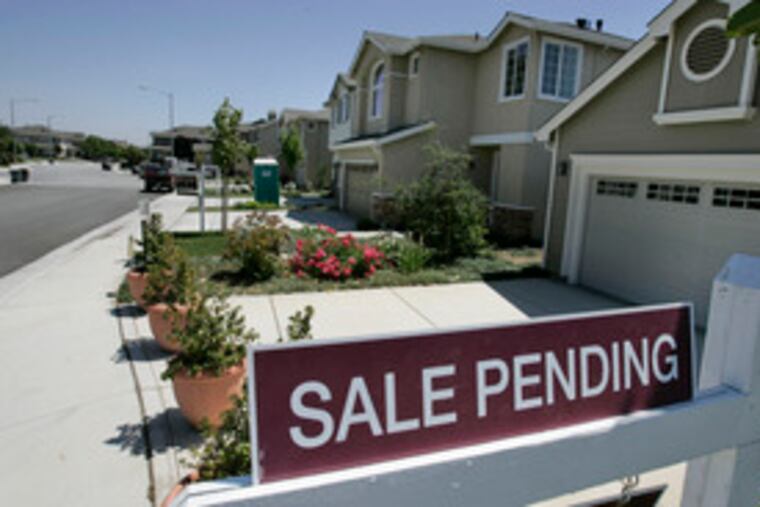Home prices slip in S&P index
NEW YORK - U.S. home prices fell 1.4 percent in the first quarter compared with a year earlier, the first quarterly decline since 1991, according to a housing index released yesterday by Standard & Poor's Corp.

NEW YORK - U.S. home prices fell 1.4 percent in the first quarter compared with a year earlier, the first quarterly decline since 1991, according to a housing index released yesterday by Standard & Poor's Corp.
"We still don't see anything that looks like a clear bottom," S&P index committee chairman David Blitzer said. "We're still headed down."
The drop in the S&P/Case-Shiller U.S. National Home Price Index reflected sales of existing single-family homes in metropolitan markets in nine U.S. census divisions.
For March, S&P's 10-city and 20-city composite indices, which measure fewer cities than the national index, also fell over the previous year - the 10-city index by 1.9 percent and the 20-city index by 1.4 percent.
S&P said 13 of the 20 cities reported that prices dropped or remained flat.
Boston, Detroit, San Diego and Washington had the greatest declines. Strong price appreciation over the year before was reported in Charlotte, N.C.; Seattle; and Portland, Ore. Compared with February, however, the gains were more modest.
Federal Reserve governors watch housing as one of the most important indicators of overall economic health because of its pull on consumer spending and construction.
On May 9, Fed governors held the benchmark interest rate in place at 5.25 percent, keeping the prime interest rate used by commercial banks at 8.25 percent, which adds stability and is good for borrowers. The Fed last raised rates in June.